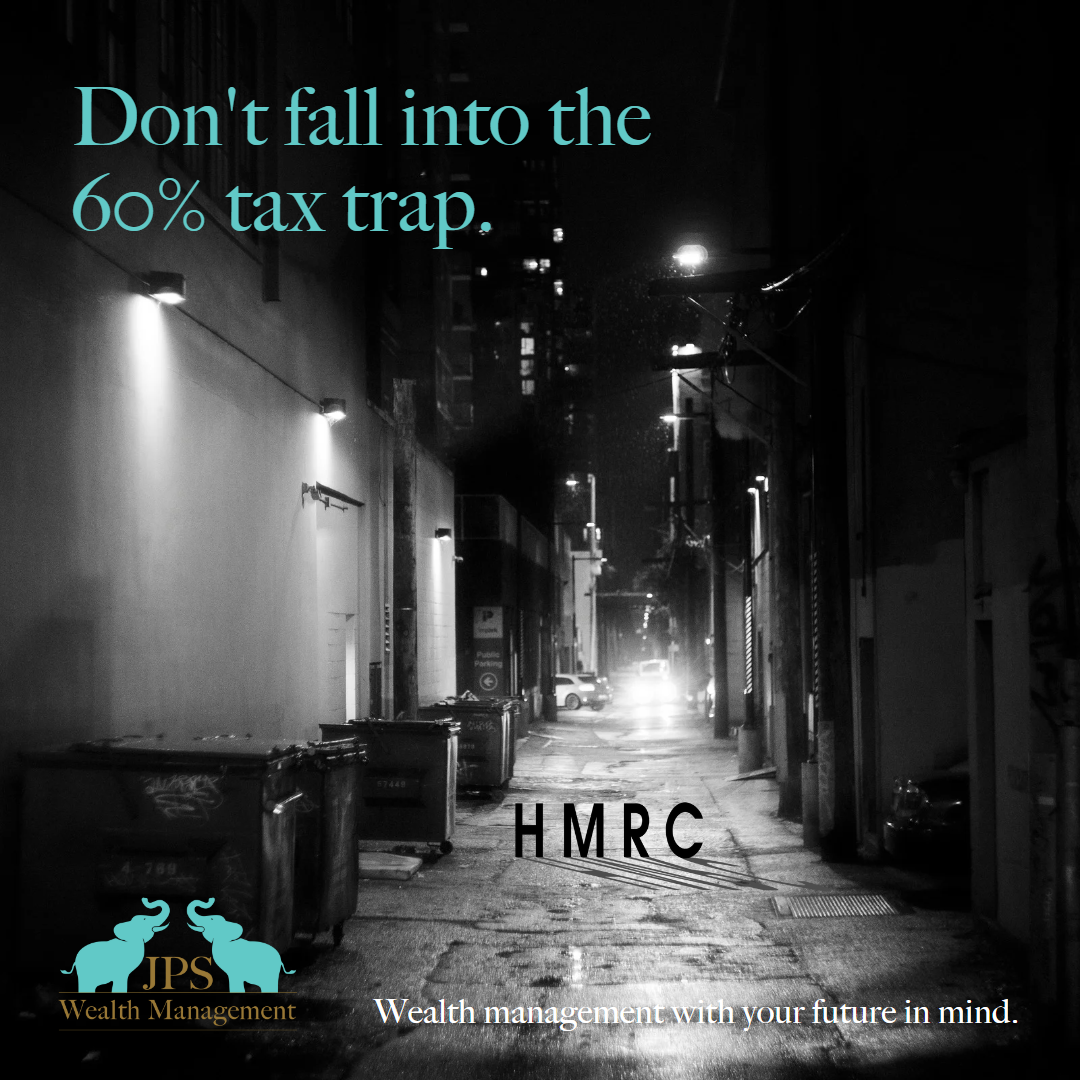The 60% tax rules aren’t published in any HMRC guidelines and that’s because it’s an unofficial effective rate of Income Tax. Higher earners are subject to a tapering of personal allowances which can mean people earning between £100,000 and £125,140 can end up paying 60% tax.
Tax rules change frequently and it’s not unusual for people to unwittingly fall into stealth tax traps that have a big effect on their income.
When it comes to the 60% stealth tax, you can mitigate, and even avoid, it completely. The key is working with the right financial planner who can help you to create a plan to avoid simple, but very costly mistakes with tax.
When you cross the threshold of £100,000 in earnings your personal allowance (the amount you earn each year without paying tax) of £12,570 is slowly reduced. Right now, it tapers off at a rate of £1 for every £2 you earn above £100,000. In real terms that means for every £100 of income between £100,000 and £125,140, you only take £40 home – £40 is deducted in Income Tax, while another £20 is lost by the tapering of the personal allowance. This amounts to a 60% tax rate. Once you’re earning £125,140 or more, you don’t get any personal allowance at all.
The easiest, and quickest, way to ‘reduce’ your income to bring it back below the 60% threshold is to pay more into your pension before the end of the tax year. It’s a win win, you avoid paying 60% tax and you boost your pension pot at the same time.
Hypothetically, if you received a pay rise of £1,000, which meant that your taxable income was now £101,000. To avoid bumping into the stealth tax zone, simply pay £1,000 into your pension, you’ll avoid the stealth tax and enjoy the benefit of a 40% top-up on your contribution, thanks to pension tax relief. Subject to certain allowances, in the 22/23 tax year you pay up to £40,000 into your pension, and still enjoy tax relief on your contributions.
Topping up your pension before tax-year end can reduce the amount of tax you pay in a number of ways. Any contribution you make reduces your taxable income – so if you can, it’s good to pay in as much as you can afford this year.
Another stealth tax to watch out for is the High-income Child Benefit tax charge on families where one partner has a net adjusted income of more than £50,000. This charge also uses tapering, with an extra 1% deduction of the amount of Child Benefit for every £100 of income over £50,000. Once again, you can use pension contributions to massage your income back down below the threshold.
Tax rules are always moving. Changes can happen at any time and they’re almost never straightforward. Finding and working with the right financial adviser is crucial. We keep our clients up to date and alert them anytime there has been a change that could affect their income (positively or negatively). As an Appointed Representative of St. James’s Place, we get a heads-up of any updates as soon as they occur, which allows us to keep our clients ahead of the game.
We’ve got you covered.
Book a no-obligation call with Jayna Shah, Director and Chartered Financial Planner, at JPS Wealth Management to run through where savings can be made and stealth taxes can be avoided.
The value of an investment with St. James’s Place will be directly linked to the performance of the funds you select and the value can therefore go down as well as up. You may get back less than you invested.
The levels and bases of taxation, and reliefs from taxation, can change at any time. The value of any tax relief is generally dependent on individual circumstances.

The Partner Practice is an Appointed Representative of and represents only St. James’s Place Wealth Management plc (which is authorised and regulated by the Financial Conduct Authority) for the purpose of advising solely on the Group’s wealth management products and services, more details of which are set out on the Group’s website www.sjp.co.uk/products. The ‘St. James’s Place Partnership’ and the titles ‘Partner’ and ‘Partner Practice’ are marketing terms used to describe St. James’s Place representatives.
JPS Wealth Management Ltd is registered in England and Wales, Number 09274545. Registered Office: 14a Montpelier Place, Brighton, BN1 3BF.